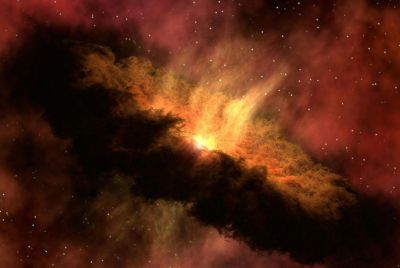Climate Change Theories Complicated by Cloud Formation Discovery
An experiment led by scientists, which aimed at studying how clouds form, suggests that some climate models may need to be "substantially revised", Nature journal reports.
The study has been hailed as one of the most detailed studies to date focusing on the tiny liquid or solid particles suspended in the atmosphere also known as aerosols.
When the aerosols reach a certain size, they can become "seeds" for cloud droplets.
The aim of the study is to create a better understanding of how clouds form and in particular the role of cosmic rays.
The research has implications on the climate change research field as aerosol particles and the clouds they seed have a cooling effect on the Earth by reflecting radiation from the sun.
The experiment has established there are important shortcomings in descriptions that we use to describe how they arise in nature, pointing out the existence of one or more unidentified organic gases.
While it is yet not known if the gases are produced naturally or from human activities, the study reveals their influence on the Earth's cloud cover.
Aerosols form the basis of the "seeds" from which clouds grow and these seeds form when sulphuric acid and ammonia molecules cluster together, which might be helped by cosmic rays.
But results from the study revealed how these ingredients create only a small portion of the cloud seeds formed in the atmosphere.
Researchers also found that cosmic rays from the depths of space can increase the formation rates of aerosols in some cold regions of the atmosphere.
The results do not establish whether cosmic rays affect Earth's climate in a significant way, because the aerosol particles studied were too small to seed cloud droplets.
Dr Jasper Kirkby, head of the CLOUD (Cosmics Leaving OUtdoor Droplets) experiment at CERN, the particle physics laboratory near Geneva, led the study, which also involves an interdisciplinary team of scientists from 18 institutes in nine countries -- atmospheric physicists, solar physicists, and cosmic-ray and particle physicists.
Kirkby, was taken aback by the results, telling the BBC, "We've shown sulphuric acid and ammonia can't account for nucleation [the very early stages of cloud seed formation] observed in the lower atmosphere.
"We've found that this can only account for a tenth to a thousandth of the rate that's observed. So it's clear from this first set of measurements that our present treatment of aerosols in climate models needs to be revised quite a lot.
"Even though aerosols and clouds are very important [in climate modelling], the basic numbers haven't been measured properly and we're doing that," he added.
Professor Mike Lockwood of Reading University in England added: "Something else, as yet unknown, is helping enhance the nucleation rates there. Depending on its source, this could even be unexpected additional [human-caused] climate forcing or feedback effect."
© Copyright IBTimes 2025. All rights reserved.


















